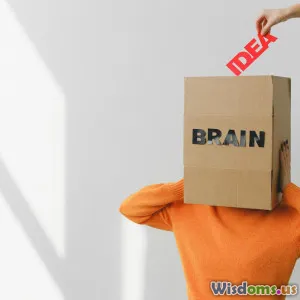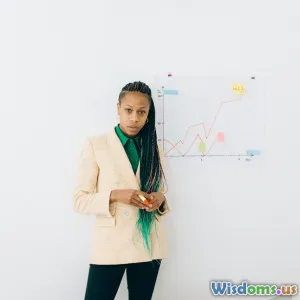
Can Artificial Intelligence Really Replace Human Photographers
7 min read Explore how AI challenges human photographers and whether it can truly replace the creative eye behind the lens. (0 Reviews)
Can Artificial Intelligence Really Replace Human Photographers?
Photography has always been an art grounded in human perception, emotion, and creativity. Yet, as artificial intelligence (AI) technology advances at an unprecedented pace, it challenges many assumptions about who — or what — can capture the perfect shot. The proliferation of AI-driven photography tools in recent years invites an intriguing and complex question: Can AI truly replace human photographers?
Introduction
Imagine a world where your camera doesn’t just automatically adjust settings but autonomously hunts for the ideal compositions, anticipates emotional moments, and edits images with near-artistic sensibility. This isn’t science fiction: AI algorithms now enhance phone cameras, automate editing, and even generate photographic art from scratch. While AI’s integration promises higher efficiency and accessibility in photography, it simultaneously stirs debate about the irreplaceability of human artistry.
The Rise of AI in Photography
Smart Cameras and Computational Photography
Modern smartphones spotlight the evolution of AI in photography most visibly. Apple’s iPhone, Google Pixel, and Huawei devices employ computational photography, where AI blends multiple images, applies HDR, and optimizes focus and exposure seamlessly. For instance, Google’s Night Sight mode can capture impressive nocturnal shots without flash, using AI to reduce noise and brighten images intelligently.
AI-Powered Editing Software
Applications like Adobe Photoshop’s Sensei or Luminar AI have revolutionized post-processing. These tools recognize objects, skies, faces, and instantly adjust color tones, remove blemishes, or replace backgrounds, simplifying complex edits generally requiring expert intervention.
AI-Generated Images and Creative Assistance
Platforms such as DALL·E and Midjourney produce photorealistic images from textual descriptions. While these images are synthetic rather than captured through traditional photography, they exhibit AI's encroachment into the creative domain previously reserved for humans.
Limits and Unique Strengths of Human Photographers
The Intuition and Emotional Intelligence Factor
Unlike machines, human photographers interpret nuanced human emotions and social dynamics, anticipating moments that might elude AI's pattern-centric algorithms. The suspense before a kiss in a wedding shoot, a child’s fleeting smile, or the intimacy in street photography relies heavily on emotional intelligence and situational awareness.
Artistic Vision and Storytelling
Photography is not just technical—it's a narrative means. Photographers decide how to frame a subject, what to include or exclude, when to shoot, and what mood to convey. These decisions are subjective, often inspired by life experiences, cultural context, and personal perspective, elements AI cannot authentically replicate.
Spontaneity and Adaptability
Situations vary dramatically: changing light conditions, unexpected weather, unconventional environments. Human creativity involves improvisation—adjusting on the fly to capture the essence of a scene. AI, although improving, still struggles with unpredictable contexts beyond programmed data.
Real-World Cases Illustrating Both Sides
Automated Journalism and Sports Photography
In many newsrooms, AI-driven cameras capture events like marathons and soccer matches with minimal human presence, tracking subjects and positioning shots based on preset parameters. This technology maximizes coverage efficiency in high-demand scenarios but generally lacks in capturing emotional highs or context beyond simple framing.
Commercial and Fashion Photography
High-profile fashion shoots and commercials still heavily rely on human photographers for directing models, perfecting lighting setups, and visualizing brand aesthetics. AI tools assist in retouching but don’t yet replace the conceptual mastermind behind campaigns.
AI-Influenced Art Projects
Digital artists and photographers sometimes collaborate with AI to push creative boundaries. For example, artist Refik Anadol uses AI data visualization to create immersive experiences blending photography and machine learning, demonstrating AI as a powerful tool rather than a substitute.
Ethical and Industry Implications
Impact on Professional Photographers
The automation of routine tasks like photo culling and simple retouching could liberate photographers to focus more on creativity. However, entry-level and commercial jobs face risks due to AI-enhanced amateur tools reducing demand for hired professionals.
Issues of Authenticity and Ownership
If an image is generated or heavily altered by AI, questions arise about authorship and originality. The photography community grapples with maintaining integrity and defining what constitutes an authentic photographic work in the AI era.
What the Future Holds: Partnership Over Replacement
Experts like National Geographic photographer Ami Vitale often emphasize the irreplaceable value of human empathy and storytelling in photography. While AI can augment these skills, it cannot fully embody human experience.
The future likely lies not in AI supplanting photographers, but in collaboration: automated tools handling technical adjustments and mundane tasks, enabling photographers to concentrate on vision, narrative, and human connection.
Conclusion
Artificial intelligence has undoubtedly revolutionized many aspects of photography—from shooting assistance and editing to synthetic image creation. However, the essence of photography as a human art form rooted in emotion, intuition, and storytelling remains beyond AI’s current capabilities.
Rather than fearing obsolescence, photographers should embrace AI as a powerful assistant, harnessing its speed and precision while upholding the uniquely human aspects of creativity. In this complementary relationship, the future of photography can be both innovative and profoundly human.
References & Further Reading:
- Google AI Blog: Computational Photography at Google
- Adobe Sensei for Creative Cloud
- "The Future of Photography - Is AI the New Photographer?" - Journal of Imaging Science
- Interview with Ami Vitale, National Geographic Photographer
- "Ethics of AI and Art," MIT Technology Review
Image credits: Unsplash for editorial photography examples.
Rate the Post
User Reviews
Popular Posts





















